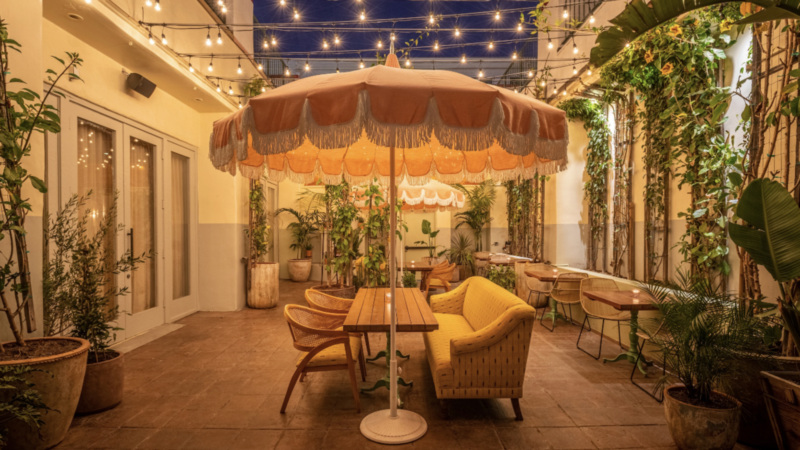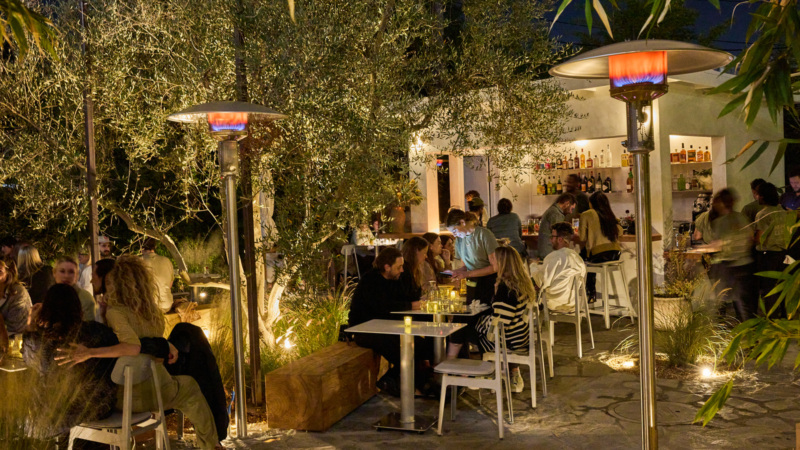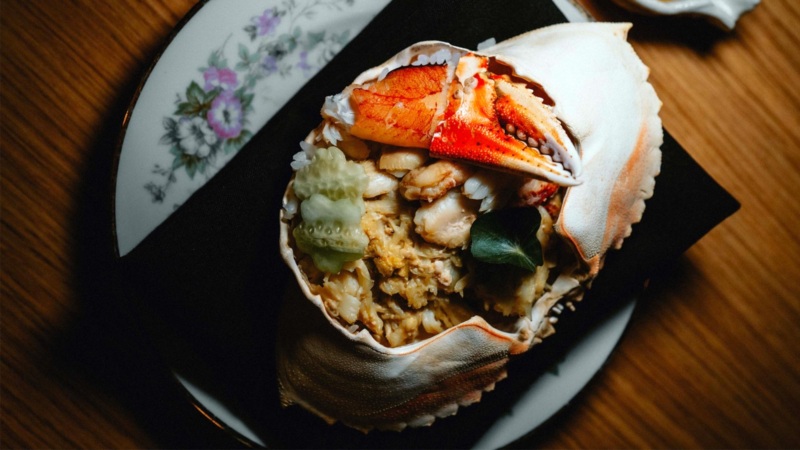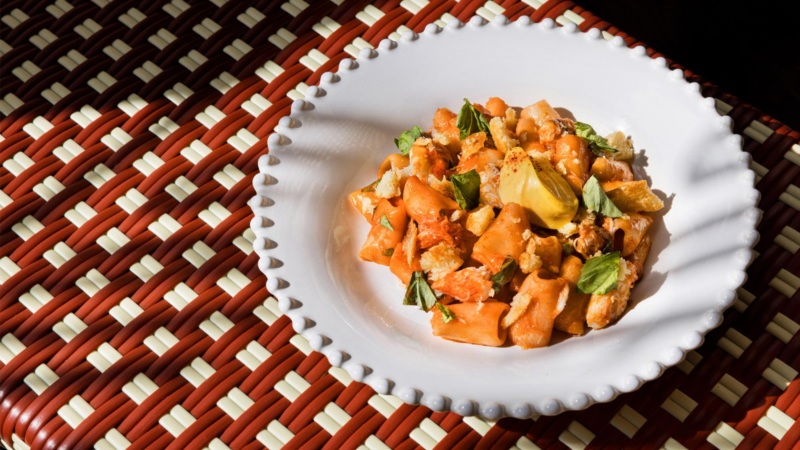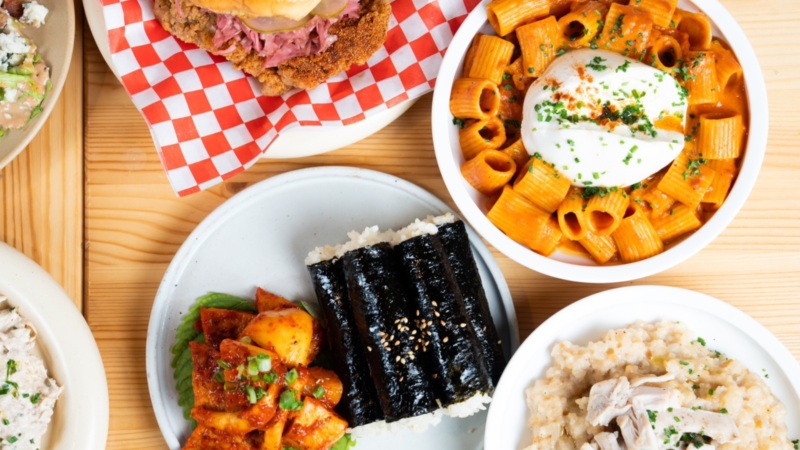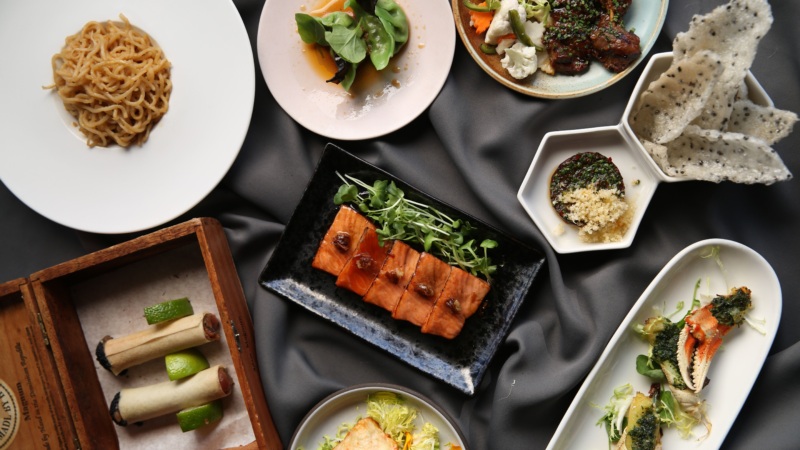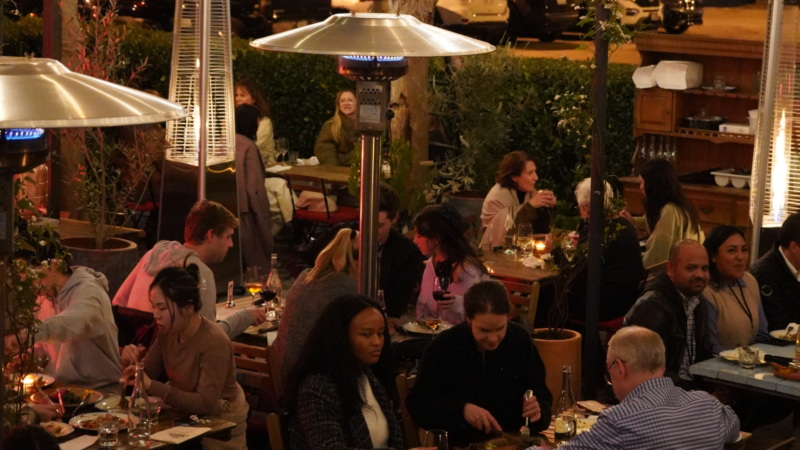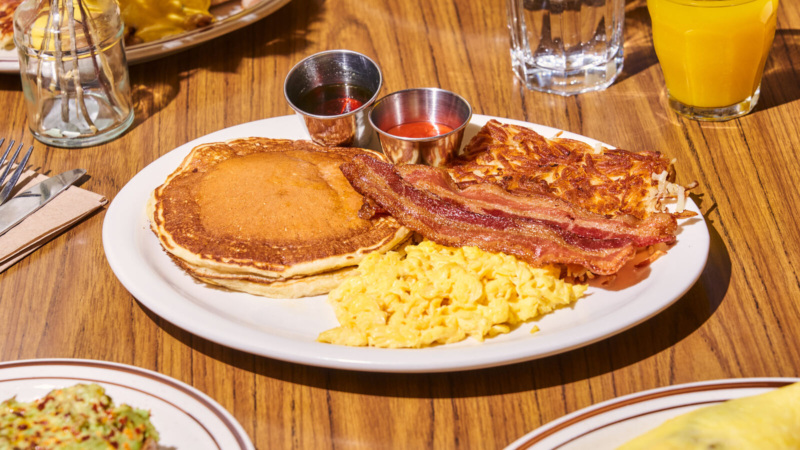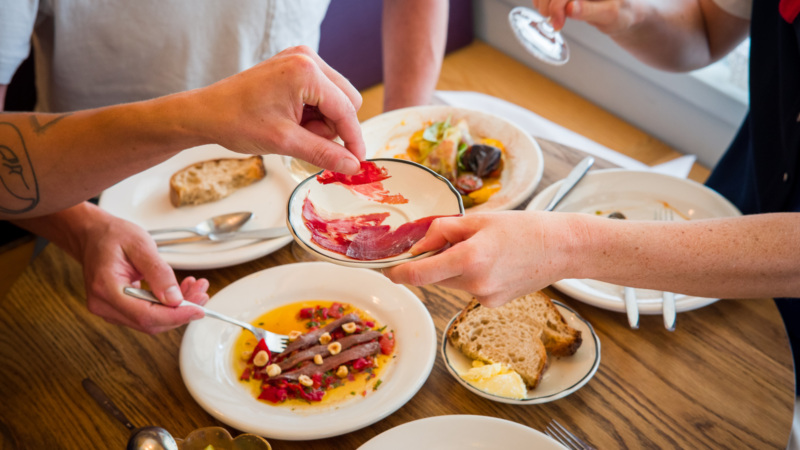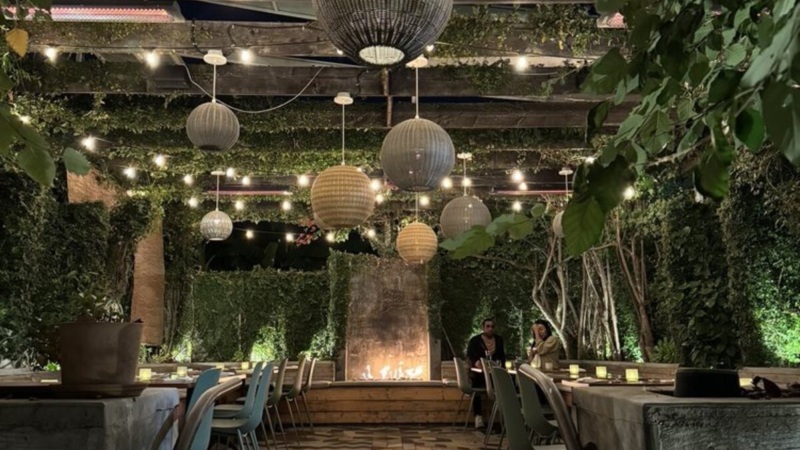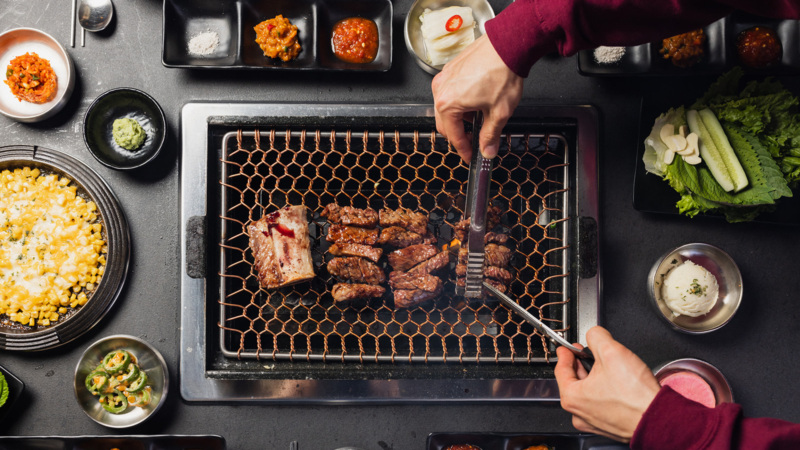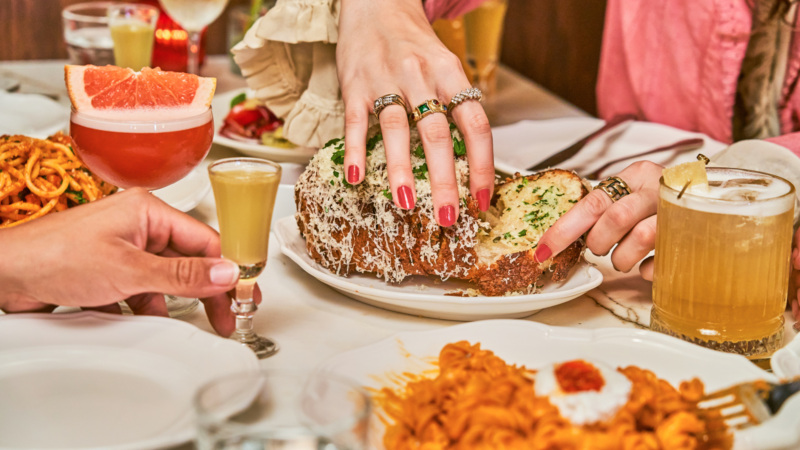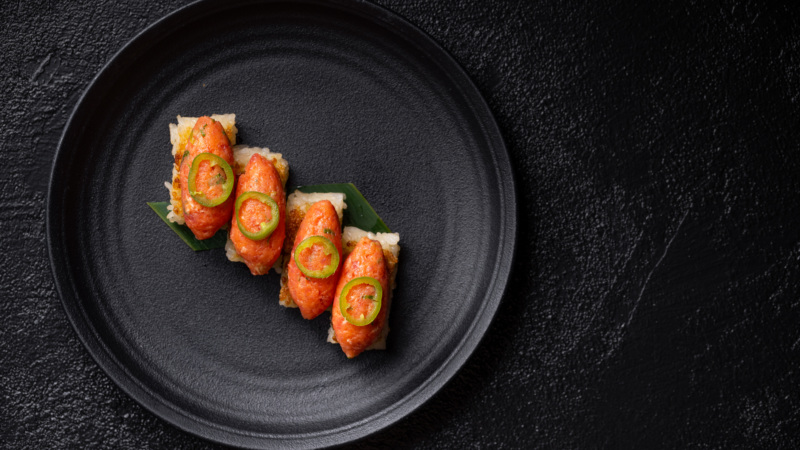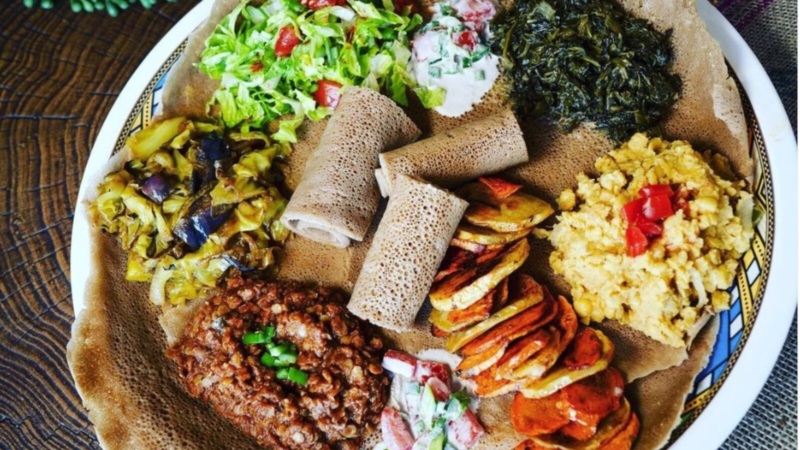
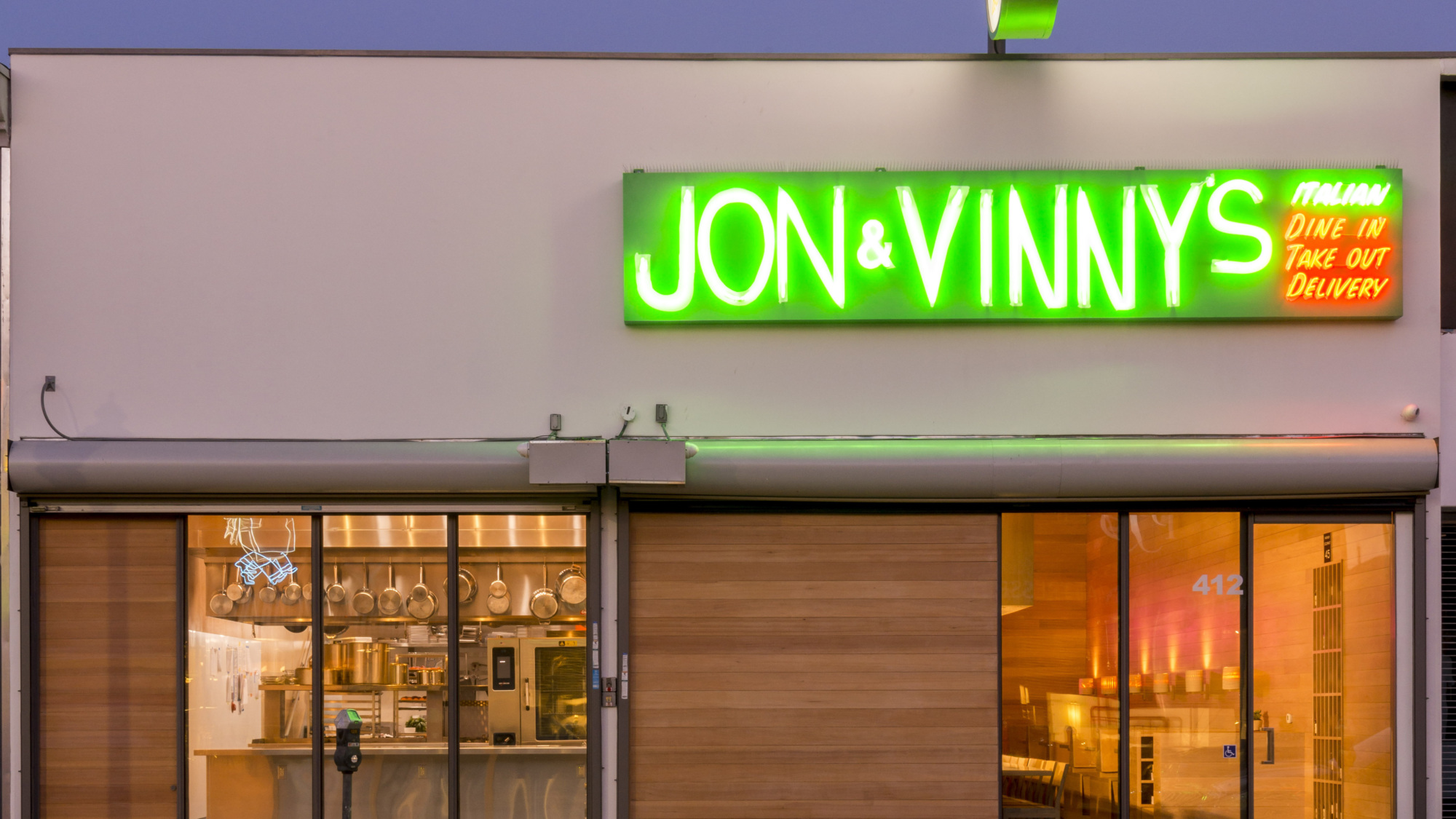
Behind the Line Los Angeles New York Seattle Washington D.C.
The Value of Restaurants Goes Far Beyond the Dining Room, Even More So in a Pandemic Era
A day before thousands of restaurants and bars across America closed their dining rooms because of the coronavirus pandemic, Los Angeles chefs Jon Shook and Vinny Dotolo were already bracing for impact.
In the week prior to the shutdown, menus at their restaurants (Animal, Jon & Vinny’s, Kismet, Petit Trois, Son of a Gun et al.) were trimmed to must-have dishes. Decisions were made about which restaurants would be able to sustain takeout and delivery, and which could also serve as general stores, supplying produce boxes and other goods. Dotolo, Shook, and pastry chef Jen Shen quickly developed pizza, pasta, and cookie kits that people could take home.
“It’s all of these things that bring joy to people’s lives in these really dark times,” Dotolo added. “We’re thinking about people. Restaurant people in general, that’s what we do: We are considerate of others’ feelings and needs and desires. We want to make people happy.”
Like other restaurateurs, they also started promoting sales of merchandise and gift cards. For every pair of Jon & Vinny’s-branded Vans slip-ons sold, the net profits will go toward the employees who were furloughed or had their hours reduced because of the shutdown. So far, they’ve sold more than 150 pairs.
And while shoes, T-shirts, and tote bags alone can’t save restaurants, every little bit helps to provide a bit of extra cash. It’s why New Yorker food correspondent Helen Rosner recently featured some 300 different restaurant- and bar-branded items — sweatshirts, mugs, condiments, hats, cocktail kits, and more — on her Instagram Stories. Within hours, some items already sold out.
***
That so many have clamored to own a small piece of their favorite restaurants is just one data point demonstrating the enduring emotional connections we have to these third places, the public places outside our homes and work that anchor our communities.
Restaurants and bars are the places where we’ve come together, shared ideas, and made connections. It’s evident in the countless GoFundMe campaigns we’ve funded. In the gift cards we’ve purchased. In the delivery orders we’ve placed. Or, in the case of writer Joshua David Stein, the pop-up craft projects depicting the favorite dishes and restaurants he misses most.
“It’s people realizing how deep their connections already were,” Rosner said.
Prior to the pandemic, Americans were spending more at restaurants than they were at grocery stores. The democratization of fine dining that followed the reign of Food Network’s celebrity chefs opened diners’ eyes (and bellies) to independent restaurants run by passionate chefs and owners who made us feel like we were part of something bigger than ourselves, or who simply made us feel like we belonged, that we were at home.
The cultural equity of our favorite restaurants has been there all along, even before this crisis struck. But now, in the midst of this pandemic, it’s being amplified — and it’s powering an evolution in how we engage with restaurants. Unable to use their dining rooms, restaurants are still finding ways to feed us, connect us, and comfort us during a time of crisis. And at a time when their own livelihoods are in complete jeopardy.
“Restaurants serve so many purposes,” said Devita Davison, executive director of nonprofit FoodLab Detroit. “They weave together a community in so many places.”
And more importantly, Davison added, such restaurants “are so much more than food.”
***
While nothing can ever replace dining in a restaurant or bar, restaurateurs are getting creative with distilling that idea into at-home experiences and in the process, finding other ways to keep the lights on during this time of peril.
In DC, Nina May launched a meal delivery service called Feast by Nina May. Each delivery box includes a three-course meal for two for two nights, with detailed heating instructions and plating suggestions.
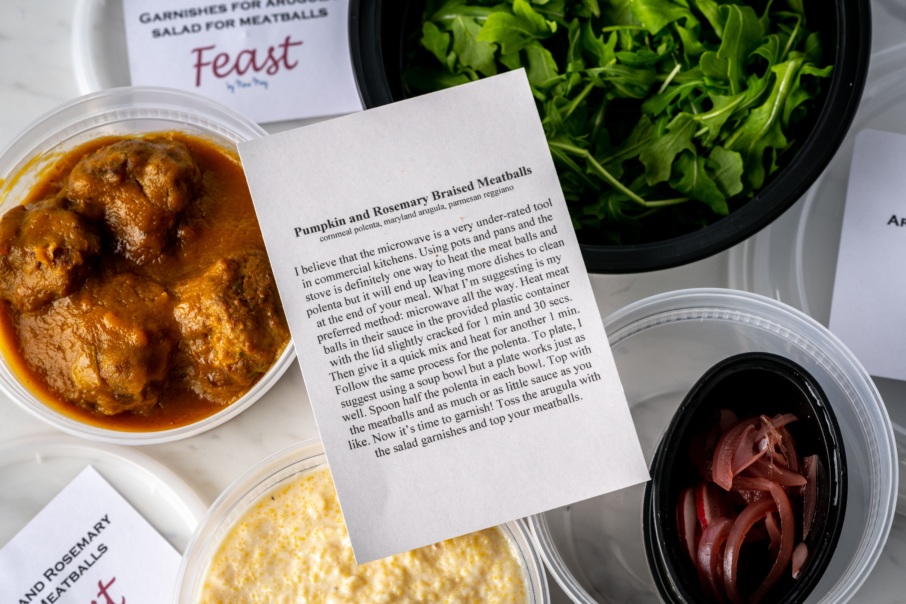
In Seattle, Addo chef Eric Rivera is selling immersive “Travel From Home” dining experiences, priced at $225 for two. The camping-themed package sets the scene with a two-person tent, pine aroma, and both a video and music playlist.
Rivera is also hosting an interactive Puerto Rican cooking class on a Zoom conference call. All participants receive their ingredients 24 to 48 hours before the class, and together they’ll learn how to make staples like arroz con gandules, tostones, and bistec.
Both of these experiences, Rivera said, give him the ability to stay connected with diners. “It gives them the flexibility to reach out to me and say, ‘Hey man, what should I do with this stuff?’ They are texting me and emailing me, and it’s really quick conversation.”
“Those folks who have been able to maintain that connection with their clientele are folks who have been able to pivot their business model so that when they do takeaways or delivery, the brand is not compromised and the food is very much so part of the ethos of the restaurant you were dining in,” Davison said.
And for those who can’t sell food now, staying top of mind through content creation is key, she added. In Detroit, Warda Pâtisserie chef Warda Bouguettaya is hosting online baking classes on Instagram while her bakery remains closed. And Sister Pie’s Lisa Ludwinski is promoting online sales of merchandise, including her cookbook.
Others, like Dominique Crenn of Atelier Crenn, have contemplated at-home private dining experiences that involved bringing chefs and a server to your home to prepare a five-course meal. Yasu Beverly Hills is offering private sushi catering.
Crenn ultimately paused the idea of Atelier at Home due to shelter-in-place orders, but could this be something restaurants offer once those orders are lifted or loosened? Especially if diners are reluctant to dine out in restaurants so soon after the pandemic?
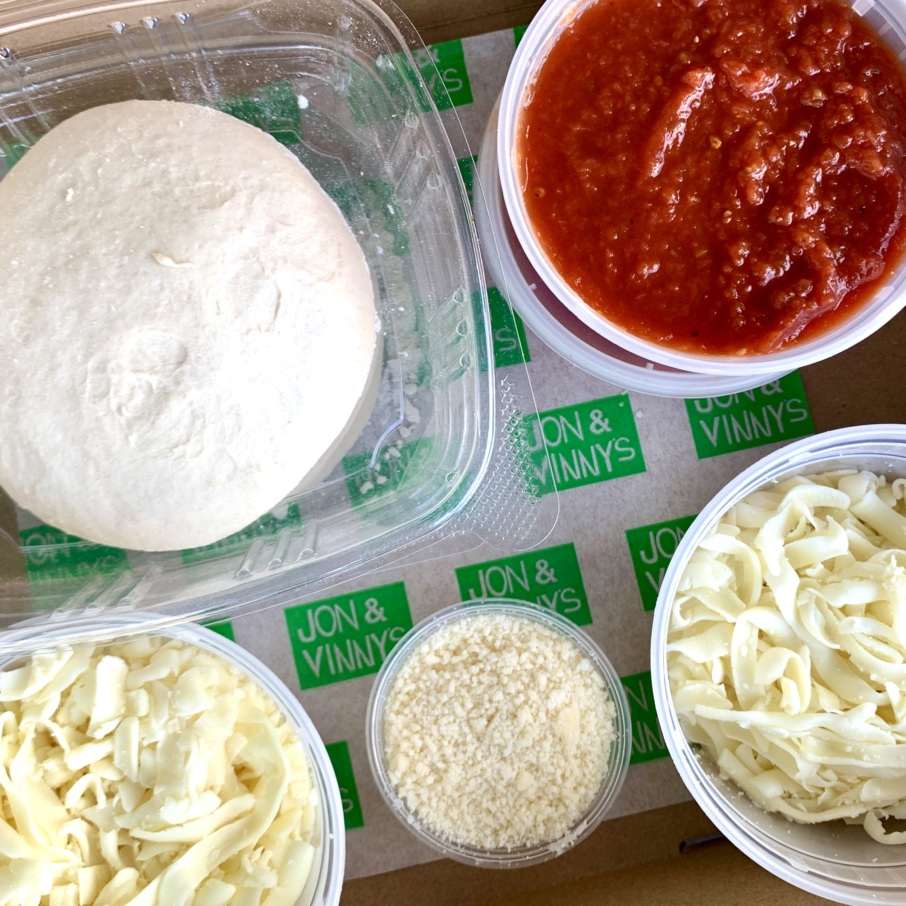
What happens after the crisis ends is something many chefs are already thinking about.
“Will this become a new part of our repertoire and our business now that we’ve done and had to do it at a much faster pace?” Shook asked. “Time will tell. If people still want the goods store, for instance, we’ll keep it going. If people aren’t going to use it, we might not continue to use it.”
Even as restaurants continue to evolve, and restaurateurs adapt to this new and distant way of interacting with their customers, it’s clear that the truest definition of restaurants remains, more or less the same.
“I used to believe that restaurants were spaces of community uplift disguised as businesses,” Alicia Blegen, the general manager at Lilia, wrote in a recent newsletter. “Since Lilia temporarily closed due to COVID-19, I revise my statement: Restaurants are uplifting communities; they may have started in a physical space but they are not confined to them. Love always finds a way.”
Deanna Ting is a Resy staff writer. Follow her on Instagram and Twitter. Follow @Resy, too.
Discover More


